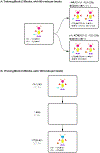The Role of Attention in Category Representation
- PMID: 38605457
- PMCID: PMC11018344
- DOI: 10.1111/cogs.13438
The Role of Attention in Category Representation
Abstract
Numerous studies have found that selective attention affects category learning. However, previous research did not distinguish between the contribution of focusing and filtering components of selective attention. This study addresses this issue by examining how components of selective attention affect category representation. Participants first learned a rule-plus-similarity category structure, and then were presented with category priming followed by categorization and recognition tests. Additionally, to evaluate the involvement of focusing and filtering, we fit models with different attentional mechanisms to the data. In Experiment 1, participants received rule-based category training, with specific emphasis on a single deterministic feature (D feature). Experiment 2 added a recognition test to examine participants' memory for features. Both experiments indicated that participants categorized items based solely on the D feature, showed greater memory for the D feature, were primed exclusively by the D feature without interference from probabilistic features (P features), and were better fit by models with focusing and at least one type of filtering mechanism. The results indicated that selective attention distorted category representation by highlighting the D feature and attenuating P features. To examine whether the distorted representation was specific to rule-based training, Experiment 3 introduced training, emphasizing all features. Under such training, participants were no longer primed by the D feature, they remembered all features well, and they were better fit by the model assuming only focusing but no filtering process. The results coupled with modeling provide novel evidence that while both focusing and filtering contribute to category representation, filtering can also result in representational distortion.
Keywords: Attention; Categorization; Computational model; Learning; Memory; Priming effects; Representation.
© 2024 The Authors. Cognitive Science published by Wiley Periodicals LLC on behalf of Cognitive Science Society (CSS).
Figures









References
-
- Ahn W-K, & Medin DL (1992). A two-stage model of category construction. Cognitive Science, 16(1), 81–121. 10.1207/s15516709cog1601_3 - DOI
-
- Anwyl-Irvine AL, Massonnié J, Flitton A, Kirkham N, & Evershed JK (2019, April 23). Gorilla in our midst: An online behavioral experiment builder - behavior research methods. SpringerLink. Retrieved April 30, 2022, from https://link.springer.com/article/10.3758/s13428-019-01237-x - DOI - PMC - PubMed
Publication types
MeSH terms
Grants and funding
LinkOut - more resources
Full Text Sources

